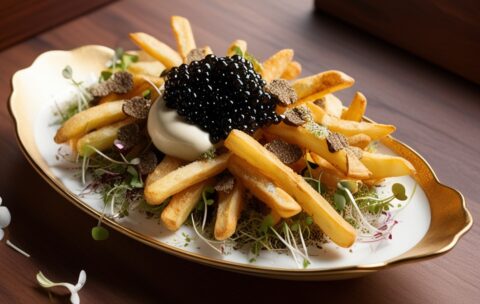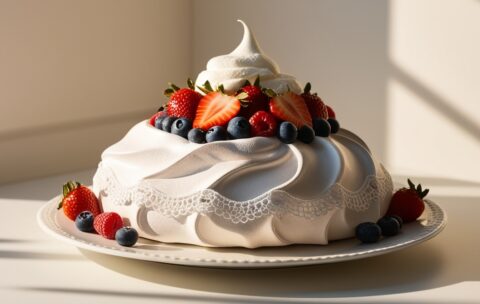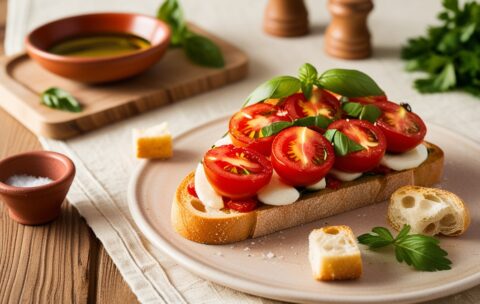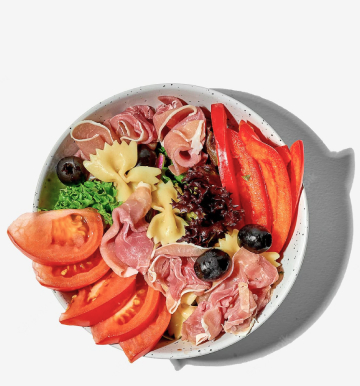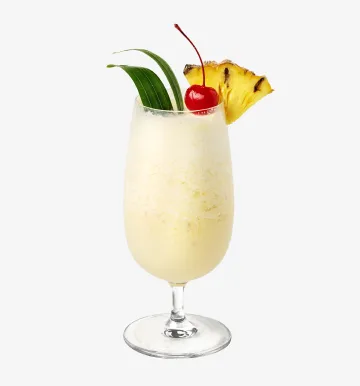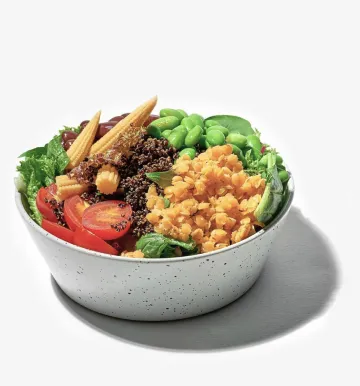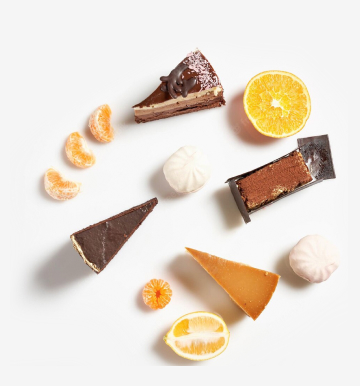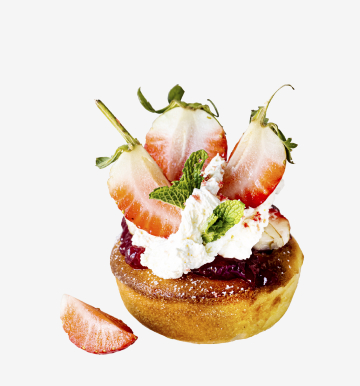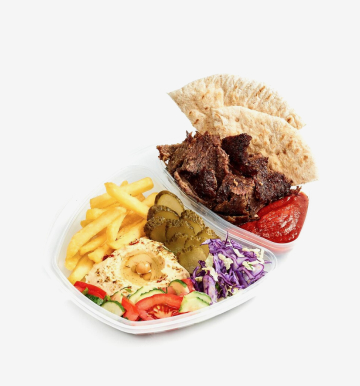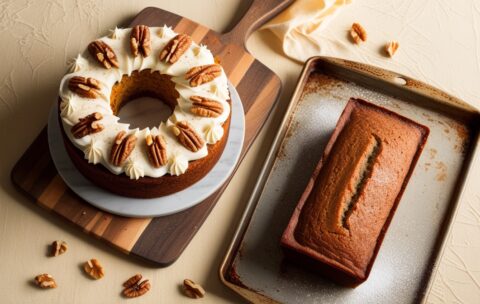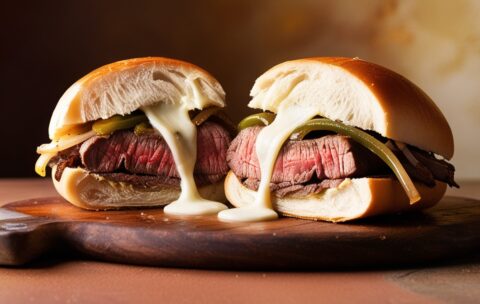Home Update 02
October 4, 2023 2025-06-05 13:04Home Update 02
Become a Home Chef
Learn to cook from scratch and master restaurant-quality meals in your own kitchen. Perfect for beginners and food lovers.

Our Top Courses
We've selected the best programs to get you started. Each course offers step-by-step lessons, hands-on recipes, and guaranteed results — even for beginners.
Mini & Individual Cake Creations
3 Lessons
3 hours
Intermediate
What you'll learn
How to scale down classic cake recipes (sponge, chiffon, pound) for smaller molds and ring cutters
Techniques for creating uniformly shaped mini cakes: using acetate sides, ring molds, and layered inserts
Methods for preparing delicate fillings—fruit compotes, chocolate ganache, and flavored mousses—suited to individual portions
Decorating approaches tailored to small canvases: tempered chocolate accents, buttercream piping, and fresh garnishes
Temperature control and timing secrets that prevent overbaking when working with small molds
Ideas for plating and packaging individual cakes to enhance presentation for events or retail
Piña Colada
5 Lessons
1.6 hour
Intermediate
What you'll learn
Historical Roots & Evolution: Explore how the Piña Colada emerged in Puerto Rico’s bars during the 1950s, and how it became the island’s official drink.
Ingredient Selection: Discover why cream of coconut (e.g., Coco López) is preferred over plain coconut milk, and how choosing fresh versus canned pineapple juice affects flavor.
Blending Techniques: Learn the proper blender speed and ice ratio to achieve a silky-smooth texture without over-diluting.
Presentation & Garnishing: Master professional garnishing methods—how to cut a pineapple wedge, position a maraschino cherry, and optional sugar-rim techniques—to create an Instagram-worthy pour.
Variation & Customization: Experiment with different rums (e.g., aged vs. silver), add fruit purees (strawberry, mango), or create a “Virgin Piña Colada” by omitting alcohol.
Tasting & Pairing: Understand how to balance sweetness and acidity, and which snacks or light bites (e.g., coconut-lime shrimp) complement this creamy tropical drink.
Crispy Onion Rings
2 Lessons
3.8 hours
Intermediate
What you'll learn
How to choose the ideal onion variety (e.g., Vidalia, Walla Walla, or Spanish) for sweetness and structural integrity.
Techniques for slicing uniform rings to ensure even frying without undercooked centers or burnt edges.
Step-by-step instructions for creating a light, airy batter (including tempura-style options) that clings to the onion.
Methods for proper dredging, double-dipping, and maintaining batter consistency to achieve an ultra-crispy crust.
Temperature control in a frying setup—whether using a deep fryer, heavy pot, or cast-iron skillet—and how to monitor oil temperature accurately.
Tips for post-fry handling: draining rings on wire racks, timing seasoning applications, and preventing sogginess when serving.
Variations in seasoning blends (spicy paprika, garlic powder, or Parmesan) to customize flavor profiles.
Caviar Pommes Frites
5 Lessons
2.5 hours
Intermediate
What you'll learn
Perfect Fry Technique: Double-fry method for ultra-crisp exterior and tender interior
Caviar Handling: Proper storage, gentle scooping, and temperature control
Sauce Preparation: Whipping crème fraîche to airy perfection and seasoning
Flavor Balancing: Harmonizing the saltiness of caviar with the richness of the fry
Plating & Garnish: Artful arrangements using micro-greens, chives, and edible flowers
French Gateau & Entremet Principles
2 Lessons
1.3 hour
Intermediate
What you'll learn
Fundamental Structures: How to build entremets layer by layer—choosing and baking the right sponge (génoise, Joconde, biscuit cuillère), creating thin croustillant layers, and assembling mousse and bavarois tiers for height and stability.
Texture & Temperature Management: Techniques to ensure each component sets properly (e.g., mousse firmness, gelatin bloom, glaze viscosity) and how to keep layers distinct without bleeding.
Flavor Profiling & Balance: Pairing fruit purées, chocolate, nuts, and creams to achieve harmonious taste profiles. Understanding acidity, sweetness, and how to cut richness with complementary elements (fruit inserts, crunchy praline).
Advanced Finishing Techniques: Preparing and applying a smooth mirror glaze, torching velour sprays, using transfer sheets, and piping delicate decorations. Learning how to achieve a polished, professional look every time.
Assembly & Troubleshooting: Best practices for unmolding, repositioning, and storing entremets. Identifying and correcting common issues—sogginess, collapsed layers, uneven glazes.
Presentation & Plating: Strategies for cutting perfectly even slices, garnishing with textures (tuile, cocoa nibs, spun sugar), and arranging plated portions so they look as good as they taste.
Pavlova
4 Lessons
3.3 hours
Intermediate
What you'll learn
Meringue Fundamentals (Paragraph + List):
You’ll understand how to whip egg whites to the correct stiffness and fold in sugar without deflating the mixture.
Recognize stages of beaten egg whites (soft peaks → stiff peaks).
Techniques for incorporating sugar gradually.
Identifying when the meringue mixture is ready for baking.
**Shaping & Baking Techniques (Table):
Step Key Tip
Piping vs. Spreading Use a piping bag for defined edges; spread with a spatula for a rustic look.
Forming a Well Create a shallow indentation in the center to hold cream and fruit.
Oven Temperature Start at 120 °C (250 °F) for 15 min, then reduce to 90 °C (200 °F) to dry.
This table highlights how small adjustments in technique and temperature impact the final texture.
Cream & Fruit Assembly (Paragraph):
Learn to prepare stabilized whipped cream so it holds shape, and choose complementary fruits (e.g., kiwi, berries, passion fruit) to balance sweetness and acidity.
Tiramisu
4 Lessons
2.5 hours
Intermediate
What you'll learn
Espresso Preparation & Soaking Technique (Paragraph + List):
You will master brewing strong espresso (or concentrated coffee) and learn how to quickly dip ladyfingers to prevent soggy layers.
Selecting grind size and brew method for intense flavor
Timing the dipping process: just enough to infuse coffee without collapsing the biscuit
Balancing sugar in coffee liquid to sweeten subtly
**Mascarpone Cream Assembly (Table):
Step Key Tip
Whipping Egg Yolks & Sugar Whisk until pale ribbon stage for stability
Folding Mascarpone & Cream Use gentle motions to maintain airiness
Flavor Infusion Add a shot of coffee liqueur or vanilla
This table highlights how each stage contributes to a smooth, stable cream.
Layering & Chilling (Paragraph):
Learn to create uniform layers—alternating soaked ladyfingers and mascarpone cream—then chill for at least 4–6 hours (or overnight) to allow flavors to meld and set properly. Presentation tips include smoothing the top layer and evenly dusting cocoa powder.
Variations & Garnishes (Bullet List):
Fruit Twist: Add a layer of fresh berries or fruit compote between cream layers.
Chocolate Shavings: Sprinkle dark chocolate curls on top for visual contrast.
Alcohol Options: Use Marsala, rum, or coffee liqueur to deepen flavor.
Decadent Cheesecakes: From No-Bake to Baked
3 Lessons
1.3 hour
Intermediate
What you'll learn
No-Bake Cheesecake Fundamentals
How to prepare a sturdy, crisp graham cracker (or digestive cookie) crust without baking
Proper gelatin blooming and incorporation techniques for a stable filling
Folding methods to achieve a light, airy texture without deflating whipped cream
Creative topping ideas: fruit compotes, chocolate ganache, caramel drizzle
Baked Cheesecake Mastery
Techniques for preventing cracks: water bath assembly, gentle mixing, and controlled cooling
How to achieve an ultra-creamy, custardy center by managing oven temperature and bake time
Making and baking a fail-proof graham/digestive cookie crust
Flavor variations: lemon zest infusion, pumpkin swirl, poppy seed blends, and espresso accents
Decoration & Presentation
Piping whipped cream rosettes around the rim with a star tip
Arranging fresh fruit in radial patterns and glazing for shine
Adding textured accents: nut crumbles, chocolate shavings, and edible flowers
Troubleshooting & Tips
Solutions for common issues: cracked tops, dense centers, runny fillings, and weeping
Ingredient substitutions (e.g., gluten-free crust options, non-dairy alternatives)
How to scale recipes up or down for 6-inch mini cheesecakes, pie-sized “cheesecake tarts,” or 10-inch party-size
Berry Gradient Ice Cream
3 Lessons
2.4 hours
Intermediate
What you'll learn
How to prepare and strain fresh berry purees for a smooth texture
Techniques for building distinct, colorful layers without mixing
Tips on freezing timing between layers for clean separation
How to balance sweet, tart, and creamy flavors across layers
Proper slicing and serving methods to highlight the gradient
Creative ways to present and garnish layered frozen desserts
Bruschetta al Pomodoro
2 Lessons
3.3 hours
Intermediate
What you'll learn
How to select and prepare the ripest, most flavorful tomatoes for maximum sweetness and juiciness.
Proper technique for toasting bread to achieve a crisp exterior and tender crumb.
Balancing acidity, sweetness, and texture in a simple tomato-garlic-basil mixture.
Chopping methods to ensure uniform tomato pieces and even seasoning distribution.
Infusing olive oil with garlic and herbs to enhance overall flavor.
Presentation tips for arranging bruschetta on a platter or serving board.
Choose Your Category
Our courses are grouped by category to help you find what suits your taste. From quick dinners to gourmet desserts — start with what inspires you.



About Our Culinary Journey
We are passionate about bringing the joy of cooking to everyone. Our mission is to empower food lovers with the skills and confidence to create delicious meals at home. With expert chefs, innovative teaching methods, and a love for culinary arts, we’re here to inspire your kitchen adventures.
Our Commitment
Everyone can cook well. Our courses offer clear guidance to ensure success for all skill levels.
Community Focus
Join our foodie community. Share creations and grow in a supportive environment.
Why Choose Our Culinary Courses?
Our courses are designed to make cooking fun, accessible, and inspiring. Whether you're a beginner or a seasoned cook, our unique features will help you elevate your skills and unleash your culinary creativity.

Expert Instructors
Learn from world-class chefs with years of experience. Our instructors guide you step-by-step, sharing professional tips.

Flexible Learning
Study at your own pace, anytime, anywhere. Our online platform offers 24/7 access to lessons, so you can fit cooking into your busy schedule.

Hands-On Recipes
Practice with real recipes designed for all skill levels. From classic dishes to modern creations, you’ll master meals that impress every time.
What Our
Students Say
Hear from our happy students who have transformed their cooking skills with our courses. From beginners to seasoned cooks, our community loves sharing their success stories!
"This course completely changed how I cook! The instructors are so knowledgeable, and the lessons are easy to follow. I’m now confident making dishes I never thought I could."
Emma Johnson
"I love the flexibility of these courses. I can learn at my own pace and still feel supported. The recipes are amazing, and I’ve impressed my family with new dishes!"
Michael Chen
"The vegan cooking course was a game-changer for me. I learned so many creative ways to make plant-based meals that taste incredible. Highly recommend!"
Sophie Martinez
"The hands-on approach made learning so fun! I went from burning toast to baking artisan bread in weeks. Thank you for such an inspiring experience!"
James Carter
Discover Our Newest Culinary Courses
Get inspired by our latest additions! These exciting courses bring fresh ideas and techniques to your kitchen, perfect for food lovers eager to try something new. Browse our carousel to find your next culinary adventure.
Smoked Salmon and Dill Canapés
3 Lessons
1.8 hour
Intermediate
What you'll learn
Techniques for selecting high-quality cold-smoked salmon with optimal texture and flavor.
How to prepare crisp bases—whether toasted brioche rounds or thin cucumber slices—for a sturdy yet delicate platform.
Methods for making a light, herbed cream cheese spread that balances zest and creaminess.
Proper assembly and layering to ensure each canapé holds together and presents beautifully.
Pavlova
4 Lessons
3.3 hours
Intermediate
What you'll learn
Meringue Fundamentals (Paragraph + List):
You’ll understand how to whip egg whites to the correct stiffness and fold in sugar without deflating the mixture.
Recognize stages of beaten egg whites (soft peaks → stiff peaks).
Techniques for incorporating sugar gradually.
Identifying when the meringue mixture is ready for baking.
**Shaping & Baking Techniques (Table):
Step Key Tip
Piping vs. Spreading Use a piping bag for defined edges; spread with a spatula for a rustic look.
Forming a Well Create a shallow indentation in the center to hold cream and fruit.
Oven Temperature Start at 120 °C (250 °F) for 15 min, then reduce to 90 °C (200 °F) to dry.
This table highlights how small adjustments in technique and temperature impact the final texture.
Cream & Fruit Assembly (Paragraph):
Learn to prepare stabilized whipped cream so it holds shape, and choose complementary fruits (e.g., kiwi, berries, passion fruit) to balance sweetness and acidity.
Panzanella Salad
5 Lessons
3.6 hours
Intermediate
What you'll learn
How to choose and prep day-old bread for optimal texture
Techniques for toasting or pan-frying bread cubes so they stay crisp yet absorb dressing
Selecting and handling peak-season tomatoes and cucumbers for maximum juiciness
Crafting a harmonious vinaigrette of olive oil, vinegar, garlic, and seasonings
Layering ingredients and timing the rest period to meld flavors without sogginess
Carrot Cake & Spiced Loaf Cakes
2 Lessons
2.2 hours
Intermediate
What you'll learn
How to grate carrots (or prepare alternative base ingredients) to achieve ideal moisture and texture
Techniques for toasting nuts and folding mix-ins to prevent a heavy crumb
Spice blending ratios for cinnamon, nutmeg, ginger, and cloves to balance warmth and sweetness
Methods to cream butter and sugar just enough—no overmixing—so loaves rise evenly without tunnels
Frosting options: crafting classic cream cheese frosting, drizzling brown butter glaze, and applying a neat powdered sugar dusting
Variations on the base recipe (apple-spice, pumpkin-spice, coconut-carrot) to adapt to seasonal ingredients
Espresso Martini
7 Lessons
2.5 hours
Intermediate
What you'll learn
Historical Background: Trace the origins of the Espresso Martini and understand its cultural impact in the mid-1980s London bar scene.
Ingredient Selection: Identify the ideal vodka and coffee liqueur varieties, plus quality indicators for fresh espresso beans.
Espresso Extraction: Master key variables—pressure, temperature, and timing—to pull a shot optimized for a cocktail.
Mixology Techniques: Learn dry-shaking and ice-shaking methods to achieve a rich, stable crema and a perfectly chilled drink.
Straining & Presentation: Discover how to double-strain for a crystal-clear pour, layer foam properly, and place garnishes without collapsing the crema.
Serving & Pairing: Explore glassware choices, serving temperatures, and ideal food pairings for various occasions.
Layer Cake Construction & Filling Strategies
3 Lessons
58 minutes
Intermediate
What you'll learn
Baking for Uniform Layers: How to prep pans (lining, spray), adjust batter distribution, and use baking strips or temperature hacks for flat, even cake tops.
Leveling & Stacking: Knife vs. cake leveler methods; applying a thin “crumb coat” of frosting; inserting dowels or straws for multi-tier support; stacking layers without slippage.
Filling Varieties & Textures: Selecting between custards, curds, fruit compotes, ganaches, buttercreams, and mousse fillings—considering sweetness, moisture control, and pairings (e.g., raspberry curd with chocolate cake).
Preventing Leaks & Weeping: Techniques for sealing cake layers (buttercream dam, chocolate collar), ensuring fillings stay contained; chilling strategies to set fillings before final coating.
Flavor Harmony & Balance: Matching cake flavor (vanilla, chocolate, spice) with filling profiles (tart, sweet, creamy) to avoid one element overpowering another; adjusting sweetness levels.
Finishing & Presentation Prep: Applying a smooth final coat of frosting or ganache; creating optional decorative borders or piped accents; slicing tips for clean, even servings.
Louis XIII Pure Gold Cocktail
4 Lessons
2.3 hours
Intermediate
What you'll learn
How to select and handle Louis XIII Cognac to preserve its intricate aromatic profile
Techniques for incorporating edible gold safely and attractively
Crafting a saffron-infused vermouth modifier that enhances, not overpowers, the cognac’s rancio
Proper stirring and dilution to maintain clarity while achieving silky texture
Choosing quality orange bitters and balancing their citric-spice character against the spirit base
Presentation tips: from glass choice to garnish placement for maximal visual impact
Serving temperature guidelines to showcase every nuance of ultra-aged cognac
Grilled Salmon with Lemon Butter
4 Lessons
1.8 hour
Intermediate
What you'll learn
Outcome Description
Selecting Quality Salmon Identify sustainable salmon cuts (filets vs. steaks), check for freshness, and understand label terms (wild-caught vs. farmed).
Marinade & Seasoning Techniques Prepare a simple herb-citrus marinade that enhances flavor without overpowering the fish.
Grilling to Perfection Control grill temperature, manage flare-ups, and achieve crisp skin while maintaining a juicy interior.
Preparing Lemon Garlic Butter Combine melted butter, fresh lemon juice, garlic, and herbs to create a bright finishing sauce.
Doneness & Presentation Use visual cues and a thermometer to judge when salmon is cooked through (125–130°F / 52–54°C), and plate with complementary garnishes.
Philly Cheesesteak
3 Lessons
3.8 hours
Intermediate
What you'll learn
How to choose and prepare the ideal cut of beef (ribeye or top round) for optimal flavor and tenderness.
Techniques for slicing steak paper-thin—even when working with untrimmed roasts—to ensure quick, even cooking.
Methods for properly caramelizing onions (and optional peppers) so they develop sweetness without burning.
The art of toasting a hoagie roll: achieving a lightly crisp exterior that still yields under melted cheese.
Cheese-melting strategies (provolone, American, or Cheez Whiz): achieving a gooey, coated consistency without overcooking.
Assembly order and timing: layering meat, onions, and cheese so each bite is balanced and warm.
Customization ideas: adding mushrooms, hot peppers, or garlic aioli to elevate traditional flavors.
Caramelized Banana
2 Lessons
2.4 hours
Intermediate
What you'll learn
Banana Selection & Ripeness
How to choose bananas at the peak of sweetness and proper firmness for caramelizing.
Recognizing visual and tactile cues that indicate ideal ripeness.
Caramel Sauce Preparation
Techniques for melting and browning sugar without burning—achieving a smooth, amber-hued caramel.
Balancing sweetness and depth by adjusting cook time and adding flavor enhancers like vanilla or citrus.
Cooking & Coating Bananas
Proper slicing methods to ensure even cooking.
Timing the addition of butter and bananas so the fruit softens without turning mushy.
Tips for gently tossing banana slices in hot caramel to create uniform coating.
Serving & Pairing Ideas
Creative ways to plate caramelized bananas as a standalone dessert or as a component (pancakes, waffles, yogurt, ice cream).
Garnish suggestions—nuts, herbs, spice dustings—to add texture and color contrast.
Storage and make-ahead strategies to preserve caramel’s texture and banana integrity.




